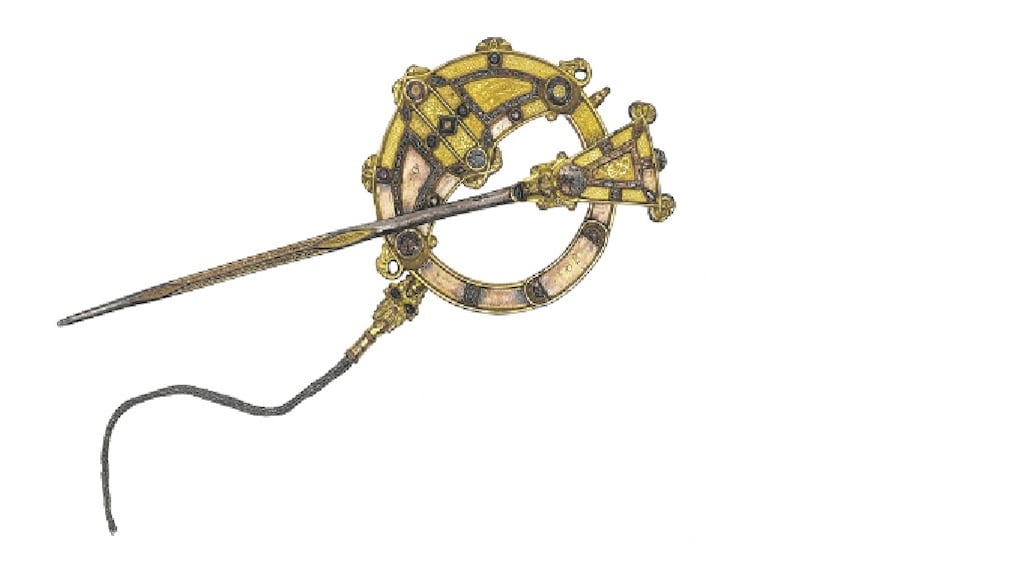Would we consider the Tara Brooch less grand if it was called the Bettystown Brooch – jeweller George Waterhouse certainly thought so. In 1850, so the story goes, two children found what was eventually established to be an eighth-century brooch washed up on Bettystown beach, and it soon came into the possession of Waterhouse. It is a stunning silver piece, highly decorated with human heads and dragons, jewelled and with detailed filigree and intricately embellished gold panels. In a marketing trick Waterhouse called it the Tara Brooch, tapping into an ancient history, and saw a commercial potential in the find. By 1851 he had made copies for Great Exhibition in London, then for the one in Dublin in 1853. His copies were far simpler – and smaller – than the original; in his sales brochure he pointed out that the brooch was more wearable because “the original measures 3½ inches, and the copies 2½ inches”. The copies were made in one piece with a decorative pin. The brooch was attached with a regular brooch pin. Queen Victoria was taken with the design and ordered several copies. Waterhouse kept the original brooch until 1868, when it was acquired by the Royal Irish Academy and then the National Museum, where it is still on display. The Celtic revival in the late 19th and early 20th century made the Tara Brooch a fashionable accessory.
Design Moment: Tara Brooch, 8th century
Children supposedly found an eighth-century brooch on Bettystown beach












